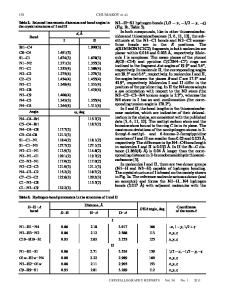Photovoltaic effect of Sn 2 P 2 S 6 ferroelectric crystal and ceramics
- PDF / 241,034 Bytes
- 6 Pages / 612 x 792 pts (letter) Page_size
- 90 Downloads / 297 Views
Yu.M. Vysochanskii Institute of Solid State Physics & Chemistry of Uzhgorod State University, 294000 Uzhgorod, Ukraine (Received 8 February 2001; accepted 6 September 2001)
To investigate the photovoltaic effect in Sn2P2S6 ferroelectrics, Sn2P2S6 crystal and ceramic sample that had a high relative density of 95% and a grain size of below 1 m were fabricated. The steady-state photovoltaic currents under infrared light illumination on both Sn2P2S6 crystal and ceramic sample were observed for the first time. The photovoltaic currents ipv on Sn2P2S6 ceramic sample and crystal were 5 and 25 nA/cm, respectively. The difference in the magnitude of the photovoltaic current resulted from the difference in the remanent polarization Pr between the crystal and the ceramic sample. The values of the photovoltaic field Epv determined from I–V curve for Sn2P2S6 ceramic sample and crystal were 0.2 and 6 V/cm, respectively; these values were several orders lower than that observed on the perovskite-type ferroelectric ceramics. The photovoltaic fields observed in this study were discussed with the conductivity of the crystal and the ceramic sample, in consideration of the figure of merit for the photostriction.
I. INTRODUCTION
In pyroelectric crystals including poled ferroelectric ceramics, photoexcited electrons generate a photovoltaic field larger than a band gap in an open circuit and a photovoltaic current to the poling direction in a closed circuit without an external field.1 This phenomenon has been known to be the photovoltaic effect in ferroelectrics. Photostriction effect is a phenomenon in which a photoinduced strain appears in poled ferroelectric materials when it is illuminated and is expressed as a superposition phenomenon of the photovoltaic effect and inverse piezoelectric effect. Ferroelectric material, which has the photostriction effect, can be applied to photodriven devices such as optically activated microactuators and robotics. Also, it is especially appropriate for application to micromechanisms, ultrahigh vacuums, and space technology. Photostriction effect is actively but limitedly studied for Pb-based oxide ferroelectric materials because the oxide ferroelectric materials have a high band gap (approximately 3 eV). Consequently, only ultraviolet (UV) must be used for photostriction effect.2–8 To extend the range of application of the photodriven devices using only UV at present, the photovoltaic phenomena J. Mater. Res., Vol. 16, No. 11, Nov 2001
http://journals.cambridge.org
Downloaded: 19 Nov 2014
on the ferroelectric material, which has a low band gap and shows reaction in the infrared (IR) range, should be studied. Sn2P2S6 (hereafter SPS) belongs to the class of sulfide ferroelectrics and undergoes ferroelectric phase transition of the 2nd order at Tc ⳱ 339 K. The crystal symmetry is monoclinic Pc in the ferroelectric phase and P21/c in the paraelectric phase.9,10 SPS has a band gap close to 2.3 eV, exhibits a pronounced photoconductivity and photorefractive property in the infrared range,11 and als
Data Loading...










